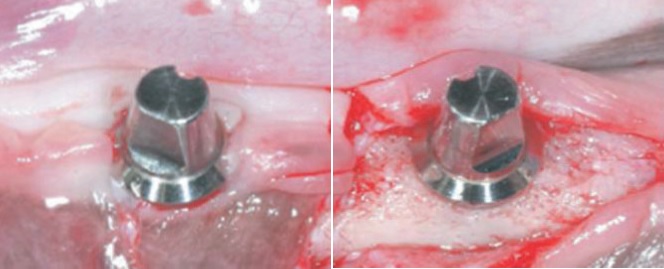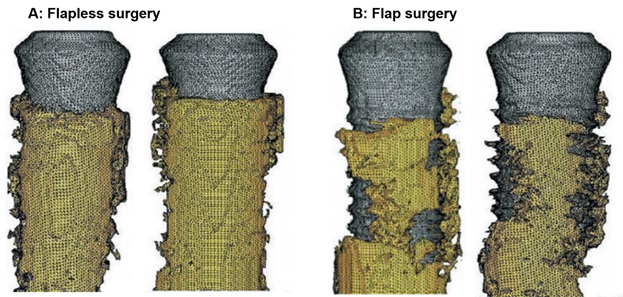Flapless Implant Surgery : An Experimental Study
Authors: Se-Hoon Kim, Byung-Ho Choi, Jingxu Li, Han-Sung Kim, Chang-Yong Ko, Seung-Mi Jeong, Feng Xuan, Seoung-Ho Lee
Goal
The purpose of this study was to examine the effect of flapless implant surgery on crestal bone loss and osseointegration in a canine mandible model.
Materials & Methods
In 6 mongrel dogs, bilateral, edentulated, flat alveolar ridges were created in the mandible. After 3 months of healing, 2 implants in each side were placed by either flap or flapless procedures. After a healing period of 8 weeks, microcomputerized tomography at the implantation site was performed. Osseointegration was calculated as percentage of implant surface in contact with bone. Additionally, bone height was measured in the peri-implant bone.
Results
Flapless surgery can achieve results superior to surgery with reflected flaps. The specific improvements of this technique include enhanced osseointegration of dental implants and increased bone height.
Conclusion
The mean osseointegration was greater at flapless sites (70.4%) than at sites with flaps (59.5%) (p < .05). The mean peri-implant bone height was greater at flapless sites (10.1 mm) than at sites with flaps (9.0 mm) (p < .05).

Fig. 1. Clinical feature after implant placement. A: Flapless surgery B: Flap surgery

Fig. 2. Three-dimensional micro-CT showing the bone (yellow) around the implants (gray).